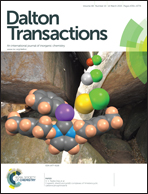(1 − x)(K0.48Na0.52)(Nb0.95−y−zTazSby)O3–xBi0.5(Na0.82K0.18)0.5ZrO3 lead-free ceramics: composition dependence of the phase boundaries and electrical properties
Abstract
In this work, (1 − x)(K0.48Na0.52)(Nb0.95−y−zTazSby)O3-xBi0.5(Na0.82K0.18)0.5ZrO3, {abbreviation: KNNST-BNKZ-x-y-z} lead-free piezoceramics were prepared by a conventional solid-state reaction method, and the composition dependence of their phase structures and electrical properties was systematically discussed. Doping with Sb5+, Ta5+, and BNKZ plays an important role on the phase boundaries as well as piezoelectric activity. A three-phase coexistence involving rhombohedral-orthorhombic-tetragonal (R–O–T) phases was observed in the ceramics with 0.0325 ≤ x ≤ 0.05, 0.035 ≤ x ≤ 0.065, 0.05 ≤ z ≤ 0.08, indicating that doping with BNKZ, Ta5+, and Sb5+ can induce the formation of such a phase boundary by simultaneously increasing TR–O and decreasing TO–T. Enhanced piezoelectric behavior was observed in the ceramics located in the composition region of the R–O–T phase boundary, and a high d33 value of 400 pC N−1 can be attained by refining their compositions (e.g., x = 0.0325, y = 0.035, and z = 0.05), together with a high TC value of ∼240 °C. Of particular interest is that a large electric field-induced strain of 0.18% (Smax/Emax = 706 pm V−1) was also found in the ceramics with x = 0.0325, y = 0.035, and z = 0.05 under a low electric field of 2.5 kV mm−1. As a result, the piezoelectric activity as well as the strain can be operated in the material system by refining x, y, and z content.


 Please wait while we load your content...
Please wait while we load your content...